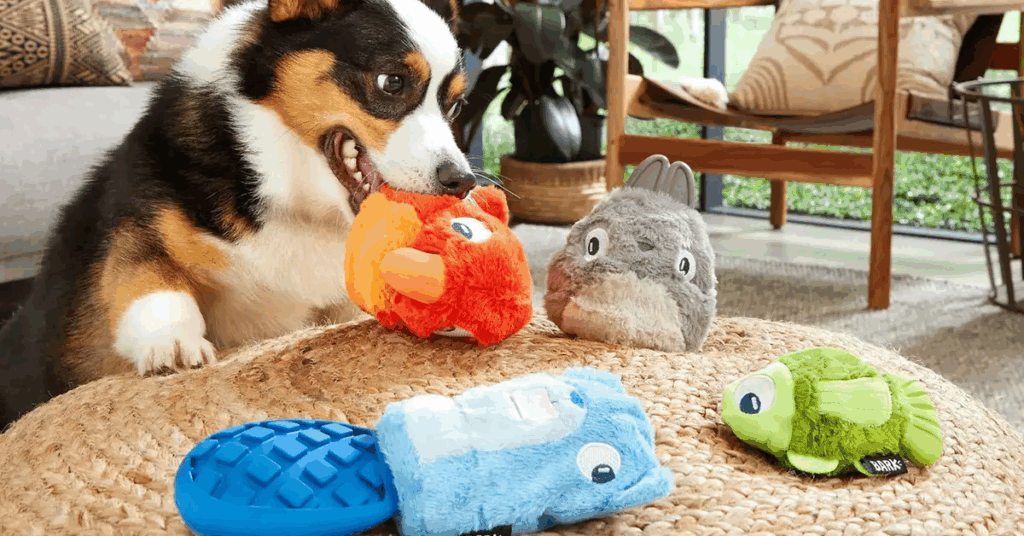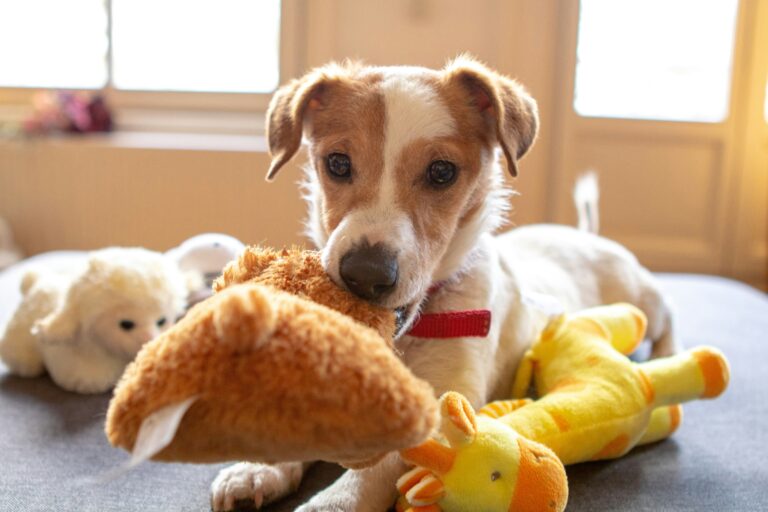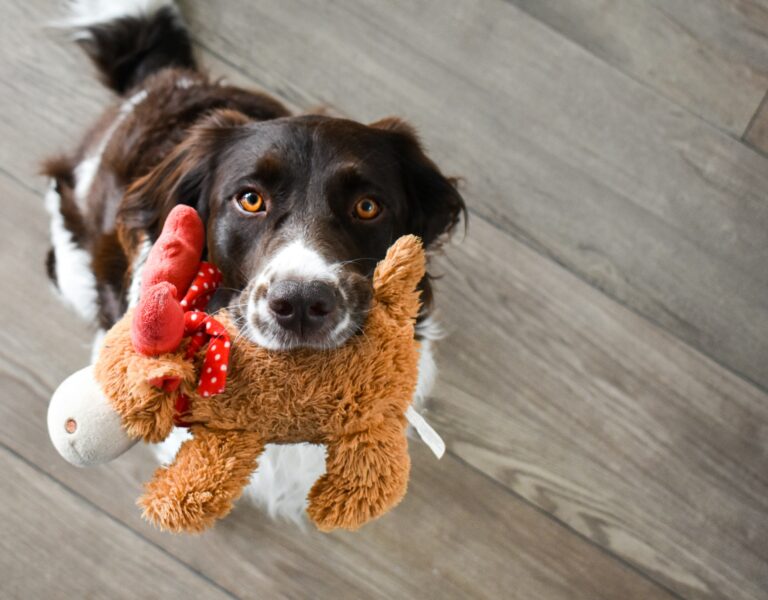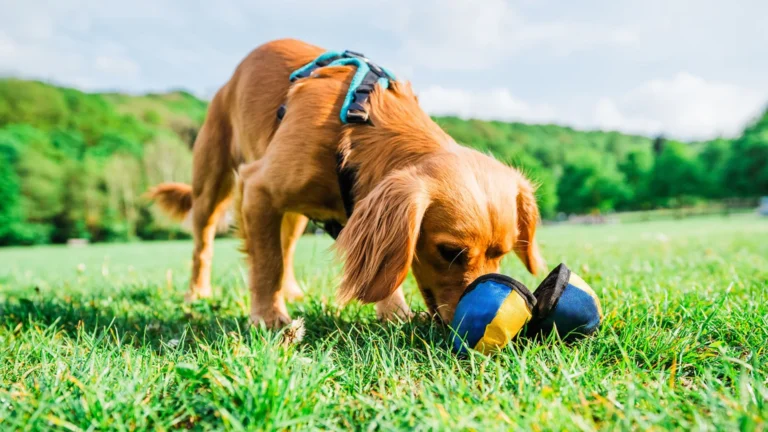Keeping small dogs entertained and active can be a challenging task for pet parents. If you’re finding it difficult to keep up with your small canine’s energy levels, you’re in the right place. Our discussion on “Playtime Pals: Toys to Keep Your Small Dog Entertained and Active” promises to share insights on the best toys for your little furry friend. By the end of this piece, you’ll have a new arsenal of toy ideas that are not only fun but also beneficial for your pet’s physical health and mental stimulation.
In today’s fast-paced world, pet parents are constantly on the lookout for innovative ways to engage their pets. This piece takes a deep dive into a variety of toys tailored specifically for small dogs. From interactive toys that stimulate their minds, to ones that encourage physical activity and even those that can be filled with treats – we’ll explore a multitude of options to keep your pet entertained.

We understand that every dog is unique, with its own set of likes and dislikes. Hence, the focus is not only on listing out the toys but also providing a comprehensive guide on how to choose the perfect toy for your pet. We’ll discuss the various factors to consider such as the dog’s age, breed, and personality. By combining expert advice with practical tips, we aim to help you turn playtime into a fun, bonding, and beneficial experience for both you and your small dog. 🐾🐶💕
Understanding Your Dog’s Play Style
When selecting toys for small dogs, it’s important to consider more than just entertainment value. The toy must serve as a safe, enriching, and stimulating part of your dog’s routine. Small breeds often have very specific play preferences, which can vary significantly by personality, breed, and even the individual dog’s history or environment. Choosing a toy that matches these needs ensures not only fun but also a beneficial outlet for energy, stress relief, and bonding.
Durability vs. Engagement
Toys for small dogs must strike a balance between being durable and engaging. While soft toys may be more comforting, they often wear out quickly, especially if the dog has a habit of vigorous chewing. On the other hand, overly durable toys made of hard rubber may not interest a dog that prefers softer textures. Knowing your dog’s chewing habits is key to selecting toys that are not only long-lasting but also genuinely enjoyable.
The Role of Texture in Dog Toys
Texture plays a significant role in how appealing a toy is to a small dog. Toys with varied textures like ridges, nubs, or fabric layers can stimulate the dog’s senses and encourage longer engagement. Textured toys are especially beneficial for puppies who are teething or adult dogs that need additional oral stimulation. Smooth toys may be easier to clean, but they can quickly become boring unless enhanced with flavors or interactive features.
Toy Safety Considerations
Safety is a top priority when choosing a toy for any dog, but it is particularly crucial for small breeds due to their delicate jaws and smaller throats. Always avoid toys with easily detachable parts or stuffing that could be swallowed. Choose toys that are labeled as non-toxic and made from BPA-free materials. Supervised play is especially important during the first few uses of a new toy to ensure your dog does not misuse or damage it.
Seasonal Toy Rotations
Introducing seasonal toy rotations is an effective way to maintain your dog’s interest over time. Just as humans can become bored with routine, dogs too benefit from occasional changes in their environment. Switching out toys every few weeks prevents boredom and allows time for cleaning and inspection. You can group toys by themes such as summer fetch toys, indoor winter plushies, or springtime interactive puzzles.
Environmental Enrichment Through Toys
Toys are one of the easiest ways to offer environmental enrichment to small dogs, especially those that spend most of their time indoors. Enrichment toys simulate activities that dogs would normally engage in if they were in the wild, such as hunting, chewing, or problem-solving. Enriched environments help prevent behavioral issues such as excessive barking, chewing, or digging that arise out of boredom.
Mental Stimulation with Puzzle Toys
Puzzle toys are ideal for small dogs that need mental engagement. These toys come in various difficulty levels and often include compartments or mechanisms that release treats when solved. Puzzle toys challenge a dog’s memory, attention span, and problem-solving skills. They can also slow down fast eaters when used to dispense kibble, contributing to improved digestion and reduced bloating risks.
Chew Toys and Oral Health
Chew toys serve a dual function by satisfying the dog’s natural urge to gnaw while also promoting dental hygiene. For small breeds, dental issues are a common concern due to overcrowded teeth. Chew toys with ridged surfaces can help scrape off plaque and massage the gums. Look for toys approved by veterinary dental organizations or that contain embedded dental agents like baking soda.
Using Toys for Training
Incorporating toys into training sessions can significantly enhance learning. Toys can act as rewards, especially for dogs that are not food-motivated. Using a toy as a reward for completing a command or good behavior reinforces the learning process and keeps the dog engaged. Tug toys can be used for “drop it” training, while squeaky toys are great for recall exercises.
Travel-Friendly Toys for Small Dogs
When on the move, especially during long car rides or flights, having the right travel toy can make a big difference. Travel-friendly toys should be compact, quiet, and easy to clean. Chew sticks, small plush toys, or interactive treat balls that don’t make noise are excellent options. These toys help calm travel-related anxiety and provide comfort in unfamiliar environments.
Understanding Toy Fatigue
Toy fatigue is a real phenomenon. Just like humans tire of the same stimuli, dogs can lose interest in a toy that is always available. If your dog ignores a toy they once loved, it may be time to rotate it out temporarily. Reintroducing a “rested” toy after a few weeks can reignite their excitement, almost like giving them something brand new.
Balancing Comfort and Challenge
It’s important to strike a balance between toys that offer comfort and those that offer challenge. A soft plush toy can provide emotional support, especially for dogs that suffer from separation anxiety. Meanwhile, a puzzle toy or a treat-dispensing ball offers mental challenge and engagement. Providing both types ensures your dog has toys that cater to different moods and energy levels throughout the day.
Types of Toys to Consider for Small Dogs
Selecting the right types of toys for small dogs is a vital step in supporting their physical health, mental stimulation, and emotional comfort. Once you have assessed your dog’s breed, size, chewing strength, and personality, it’s time to explore the wide range of toy options available. Each toy category offers unique benefits tailored to different play styles and developmental needs. Below are some of the most suitable and enriching types of toys for small dogs.
Interactive Toys: Mental Stimulation for Small Breeds
Interactive toys are especially valuable for small dogs because they do more than just entertain—they engage your dog’s brain and keep them mentally alert. These toys are designed to challenge your dog to think, solve puzzles, or manipulate parts to access a treat or trigger a response.
Puzzle toys, for example, often include compartments where treats can be hidden. Your dog must then figure out how to slide, push, or spin parts of the toy to access the reward. These are excellent for breeds known for their intelligence, such as Miniature Poodles, Papillons, or Chihuahuas.
Treat-dispensing balls are another fun example. They roll in unpredictable ways and drop small pieces of food or treats when your dog moves them around. This encourages your dog to stay active while using their problem-solving skills.
Incorporating interactive toys into your dog’s daily routine helps prevent boredom, reduce destructive behaviors, and provide an outlet for excess energy—especially in dogs that may be left alone for part of the day.
Chew Toys: Supporting Oral Health and Natural Instincts
Chew toys serve multiple purposes for small breed dogs. They help maintain good dental hygiene by scraping away soft tartar and massaging the gums. They also address your dog’s natural urge to chew—an instinct that can lead to destructive behavior if not properly channeled.

Chew toys come in many materials, but for small dogs, durability and safety are key. Rubber chew toys are generally soft enough for small mouths but tough enough to withstand repeated chewing. Nylon-based options are stronger and ideal for more determined chewers, though they should always be used under supervision.
For puppies, soft rubber teething toys can provide relief from sore gums. These toys can often be chilled to enhance the soothing effect. Some toys even feature ridges or bristles designed to clean teeth while your dog plays.
Keep in mind that rawhide can pose a choking hazard or lead to intestinal blockages in some dogs. If you choose to use rawhide, opt for small, vet-approved versions and always monitor your dog during use.
Plush Toys: Comfort and Companionship
Plush toys are favorites for many small dogs, especially those that enjoy companionship or have lower activity levels. These toys are made of soft, often stuffed fabrics, making them ideal for cuddling, carrying, or gentle chewing. Breeds like Shih Tzus, Maltese, or Yorkies often develop strong bonds with their plush companions, treating them almost like surrogate siblings or puppies.
Many plush toys are designed with added features such as squeakers, crinkly material, or multiple textures to provide sensory stimulation. These toys can evoke excitement and curiosity in dogs that might otherwise be hesitant to play.
However, plush toys are not ideal for dogs who are aggressive chewers, as they can be easily torn apart. Always supervise your pet during the initial introduction of a new plush toy and discard it once it begins to rip or lose its stuffing.
Look for plush toys with double-stitched seams and reinforced layers, especially those labeled as “tough” or “chew-resistant.” These toys will last longer and be safer for your pet to enjoy.
Combination Toys: Engaging Multiple Senses
Some toys fall into multiple categories, offering a mix of interactivity, texture, and comfort. These hybrid toys are perfect for small dogs who get bored easily or thrive on variety. For example, a plush toy that also dispenses treats or features puzzle components provides the comfort of cuddling along with the stimulation of play and reward.
Other combination toys may include tug ropes with squeaky plush elements or chew-safe materials woven into an interactive design. These options allow your dog to switch between playing styles without needing multiple toys.
Choosing a variety of toys from different categories ensures your dog remains engaged, challenged, and fulfilled in both mind and body.
Tips for Keeping Your Dog Entertained with Toys
Rotate Toys Regularly
Regularly rotating your dog’s toys can help keep them fresh and exciting. If your pet has a dozen toys available at once, they may become bored with them quickly. However, if you swap out a few toys every week, they’ll always have something ‘new’ to play with.
Engage in Interactive Play
Interactive playtime can help strengthen your bond with your pet and keep them entertained. Try engaging with them using their favorite toy, whether it’s playing fetch or a game of tug-of-war.
Use Toys for Training
Toys can be used as effective training tools, especially when combined with treats. They can be used to teach commands, promote good behavior, and provide mental stimulation.
Top Toys for Small Dogs
Now that we’ve discussed what to look for and how to use them, here are a few top picks for small dogs.
- KONG Classic Dog Toy: This versatile toy can be filled with treats to keep your dog entertained for hours.
- Outward Hound Hide-A-Squirrel Puzzle Toy: This toy provides mental stimulation as your pet tries to ‘hunt’ and remove the squeaky squirrels from their tree trunk.
- West Paw Zogoflex Tux Interactive Treat-Dispensing Dog Chew Toy: This durable, floatable toy can be filled with treats or kibble to provide hours of engaging play.
- Chuckit! Ultra Ball: Perfect for fetch-loving dogs, this high-bounce ball is lightweight yet durable, and it even floats in water!
Remember, while toys can provide hours of entertainment, nothing can replace the time and love you share with your pet. Make sure to spend quality time together, and use these toys as tools to enhance their happiness and well-being.
Conclusion
In conclusion, “Playtime Pals: Toys to Keep Your Small Dog Entertained and Active!” emphasizes the importance of interactive play and mental stimulation for your small dog. Keeping them engaged with stimulating and entertaining toys is not just for fun but also crucial for their overall well-being. These toys can help reduce boredom, alleviate anxiety, and even assist in training your furry friend, as they help to burn energy and build concentration skills. Furthermore, playing with these toys strengthens the bond between you and your pet, improving their trust and communication. It’s essential to choose toys that are safe, durable, and appropriate for their size and play style. From interactive puzzle toys to fun, fetch toys, there’s something out there to suit every small dog’s needs. So, don’t underestimate the power of playtime. Remember, a busy dog is a happy dog! Let’s keep our small dogs active, mentally stimulated, and above all, entertained with the perfect playtime pals. 🐾🎾🐕🦺



